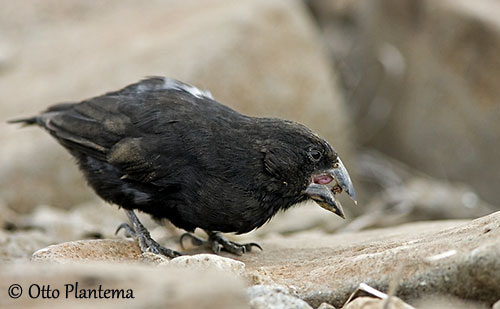
Darwin’s Finches
Generalities
Formerly classified in the family Emberizidae, the Darwin’s Finches, also known as Galapagos Finches, are now included to the family Thraupidae. They are allied to the tanagers, but not related to the true finches of the family Fringillidae. They are in the Order Passeriformes.
These birds have highly specialized beaks, well adapted to their diet. These morphological features are often used as evidence for Darwin’s theory of evolution in numerous studies and works.
Photographers :
Roger Ahlman
Pbase Galleries Peru and Ecuador
John Anderson
John Anderson Photo Galleries
Ken Havard
My Bird Gallery & Flickr gallery 1 & Flickr gallery 2
Otto Plantema
Trips around the world
Text by Nicole Bouglouan
Sources :
HANDBOOK OF THE BIRDS OF THE WORLD Vol 16 by Josep del Hoyo- Andrew Elliot-David Christie – Lynx Edicions – ISBN: 9788496553781
The Beak of the Finch: A Story of Evolution in Our Time by Jonathan Weiner - Knopf Doubleday Publishing Group - ISBN-13: 9780679733379
New Scientist - Darwin’s fast-evolving finches use a natural insect repellent
BirdLife International (BirdLife International)
Wikipedia, the free encyclopaedia
Island Life - Darwin's Finches
Oxford Journals – Molecular Biology and Evolution

Actually, the beak shapes differ from island to island, thus the cactus-finches have longer and more pointed beaks than the ground-finches. And the warbler-finches have thinner and more pointed bills than both previous groups.
Every beak-shape has its own diet, and each species shows an adaptation to the specific environment where it is living.
Male and female have different head shape and “bite force”, and females usually have longer bills than males.
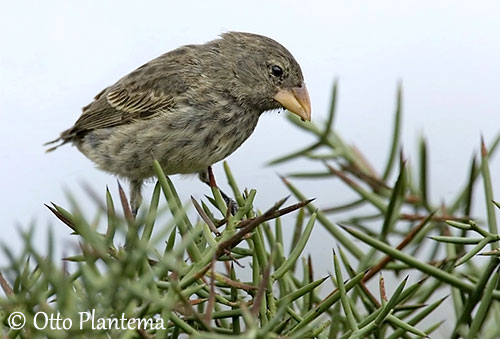
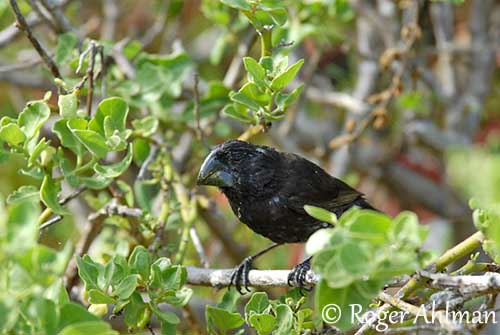
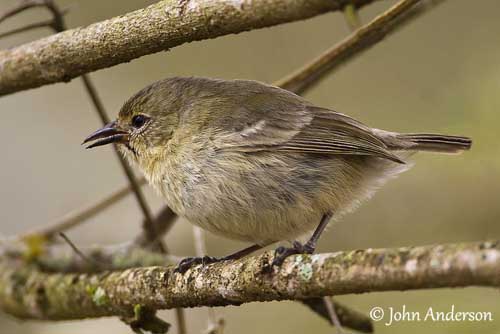
But we have to take into account the long, narrow and pointed bill of the Cocos Finch. This bird is the only Darwin’s Finch on Cocos Island, S of Costa Rica. It occupies all the available habitat types where it can find its food. But according to the habitat, the food items differ, and these birds have developed individual specialization. Each bird may use one of several foraging manners from the ground to the canopy, through branches, vine tangles, tree foliage, flowers and fruits.
This variety of feeding behaviours involves the absence of competition. Several birds may feed together in groups, but each one forages individually, with its own specialization and on different support.
While the Galapagos finches’ beaks were adapting to a variety of habitat types and related food resources on several islands, the Cocos Finch has adapted its foraging behaviour to the different habitats on only one island.
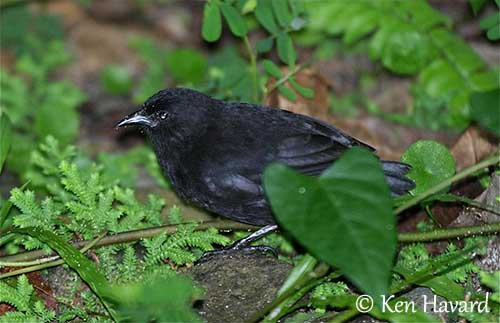
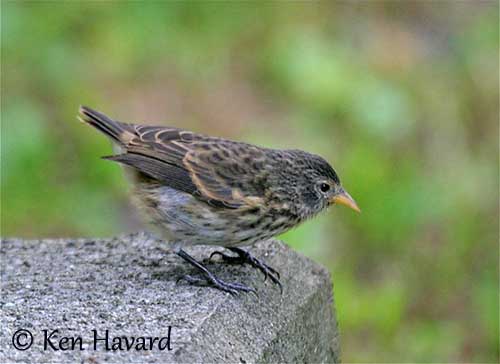
Male
Female
These dull birds are often seen as the symbols of the evolution in the Galapagos Islands. From several studies of finch populations and evolution, it appears that the successive generations of these birds have changed, in order to survive with other food sources. They are probably coming from only one South American species of genus Tiaris, and especially the species Tiaris Obscura which, through hybridization and movements from island to island, has adapted to each habitat type and related food items.
The first radiation of the genus Tiaris might have occurred in the Caribbean before to spread to Central and South America. Then, these birds reached the Galapagos, about 2, 3 million years ago.
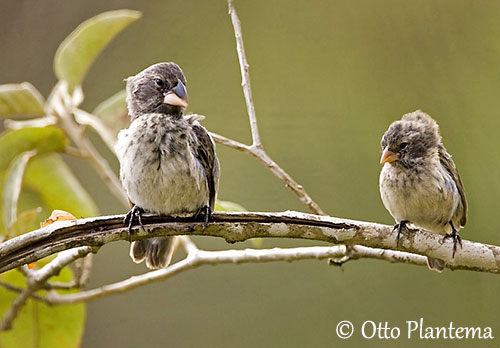
They all have in common the bill coloration, black during the breeding season, and orange-yellow outside this period. This feature is highly suggestive of common origin for all of them, and persists in spite of the different bill shapes.
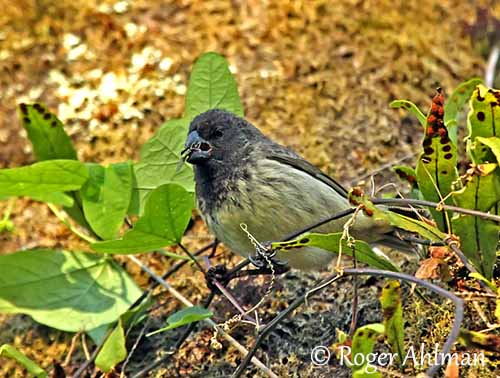
In addition, they are able to rapidly adapt to weather variations such as heavy rains and droughts caused by El Niño and La Niña. These variations involve abundance of large or small seeded plants, and the bird’s species with the right sized bills will spread and proliferate, according to the predominant seed size.
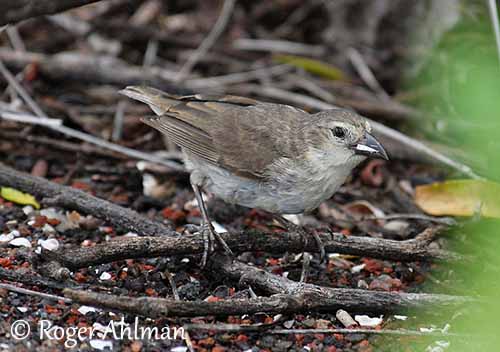
Female
We can find 14 closely related species distributed among four genera such as Certhidea, Platyspiza, Camarhynchus and Geospiza. The 15th species is the Cocos Finch of genus Pinaroloxias. This one is found on Cocos Islands, S of Costa Rica instead of Galapagos Islands.
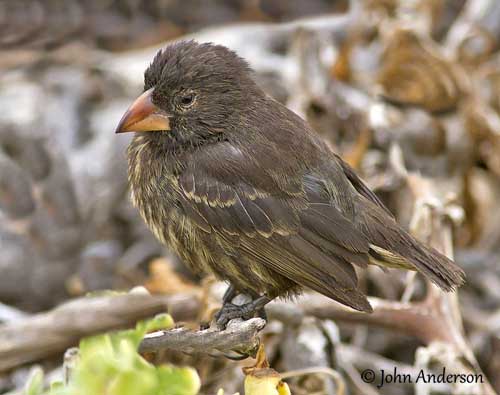
These species are threatened by introduced predators (cats, rats, dogs), nest parasites (fly Philornis downsi), avian pox, increasing of tourism, degradation of the habitat by pigs and goats, natural climatic events…
But in recent years, some finches have learnt how to use the leaves of the Guava tree, Psidium galapageium, in order to repel insects and especially Philornis downsi, and inhibit the growth of their larvae, main cause of mortality in Darwin’s Finches. They take the leaves and rub them into their feathers, as a very natural protection against these parasitic insects.
Several species are Vulnerable or even Critically Endangered. Some of them remain stable. Unfortunately, their future appears uncertain.